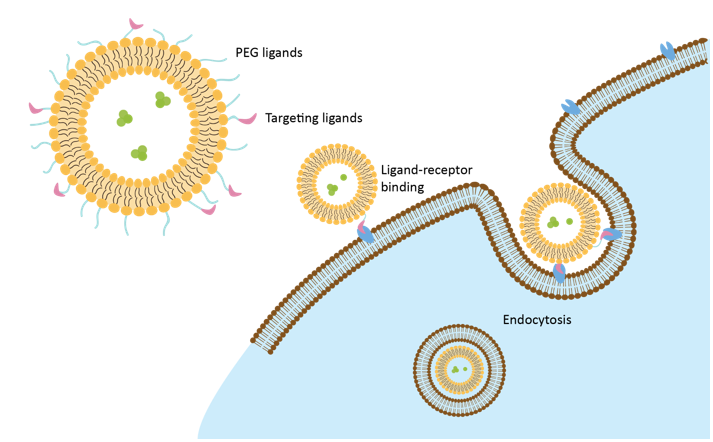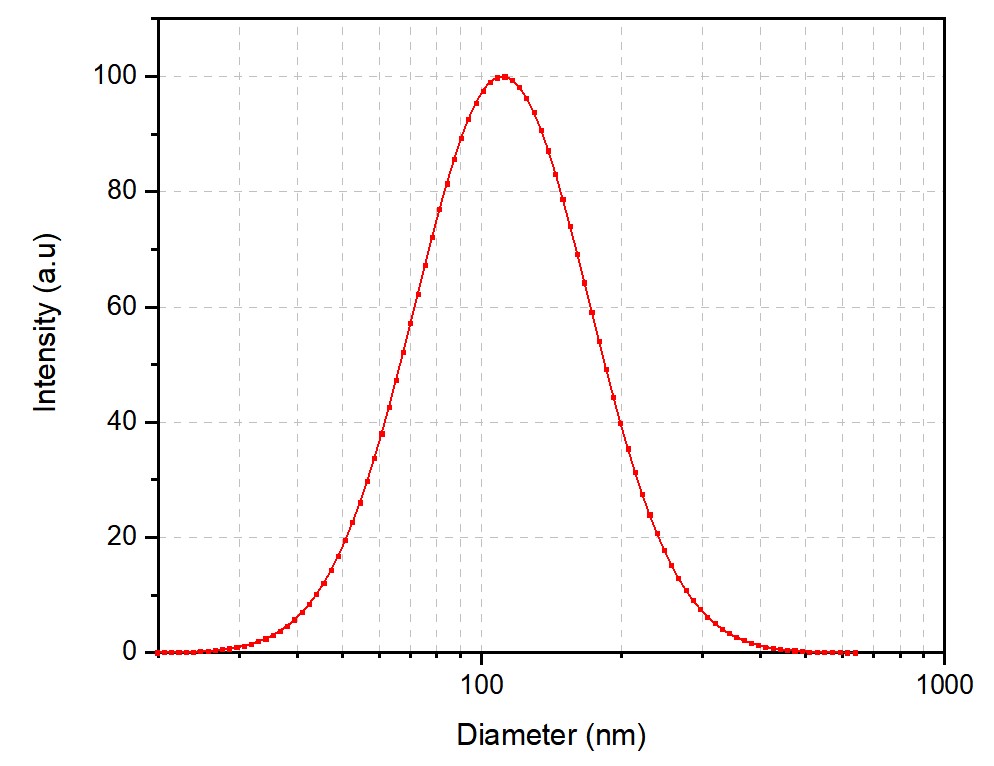A majority of drugs used for severe diseases such as cancer are cytotoxic molecules, which may distribute within the whole body and result in toxicity to normal tissues after administration. Liposomes have been recognized as a desirable drug carrier to increase the interaction or distribution between drugs and diseased tissues early in the history of its development. As a professional drug carrier provider with extensive experience in pharmaceutical and cancer research, Creative Biolabs is guaranteed to formulate the targeted liposome with the most suitable ligand according to your requirements.
Passive targeting and active targeting are the two strategies for targeted liposomes. Liposomes with a specific size range of 100 to 200 nm can accumulate into the tumor interstitial space due to EPR (enhanced permeability and retention) effect, which is defined as passive targeting. Drug-loaded liposomes with this property have been clinically proved to have antitumor activity. Moreover, the ligand-mediated targeting, which is active targeting strategy, could achieve an additional level of sophistication and specificity over desired cells & tissues through selective cellular binding and ligand-receptor mediated endocytosis, and result in enhanced efficacy and reduced systemic toxicity. The targeting ligands include monoclonal antibodies, antibody fragments (fragment antigen-binding (Fab), single-chain variable fragment (scFv)), proteins, peptides, vitamins, carbohydrates, glycoproteins, and any other molecule that can target receptors overexpressed on the surface of particular cells.
 Fig 1. Structure and endocytosis of targeted liposomes
Fig 1. Structure and endocytosis of targeted liposomes
Targeted liposomes could help accumulate in different tissues or bind to cells according to the ligands, such as liver, kidney, white adipose tissue (WAT), blood-brain barrier (BBB), and tumor tissue. An ideal target receptor or antigen should be highly expressed in target tissues but have low expression in other tissues. For example, human epidermal growth factor receptor 2 (HER2) is overexpressed 1000-fold higher in about 25% of breast cancer cases than that of normal tissue, making it a common target with positive preclinical results in targeted cancer therapy.
To achieve precise delivery to specific cells or tissues, liposomes can be surface-functionalized with various targeting ligands. These ligands recognize and bind to receptors or biomarkers overexpressed on target cells, enhancing therapeutic efficacy while minimizing off-target effects. Our platform supports the development of targeted liposomes using a wide range of ligands, including peptides, aptamers, polymers, carbohydrates, vitamins, and antibodies.
| Ligand Type | Structure | Targeting Mechanism | Advantages | Classic Ligand |
|---|---|---|---|---|
| Antibody | Large proteins (~150 kDa) | Highly specific antigen-antibody binding | Superior specificity and affinity |
Anti-HER2 antibody Anti-EGFR antibody |
| Peptide | Short amino acid sequences | Binds to cell surface receptors | Low immunogenicity, ease of synthesis, good tissue penetration |
RGD peptide TAT peptide |
| Aptamer | Single-stranded DNA/RNA | Binds to proteins or cells with high affinity | High specificity, low toxicity, modifiable | Sgc8 |
| Polymer | Synthetic macromolecules | Enhanced permeability and retention (EPR) effect or receptor-mediated | Tunable properties, multifunctionalization |
PEG Hyaluronic acid (HA) |
| Carbohydrate | Sugar-based structures | Lectin-mediated binding | Biocompatible, low immunogenicity |
Mannose Galactose |
| Vitamin | Small organic molecules | Binds to vitamin transporters | High cellular uptake, well-studied pathways |
Folic acid Biotin |
Ligand selection is of equal importance in the development of targeted liposomes. Antibodies or antibody fragments (Fab/scFv) are the most commonly used targeting ligands owing to their high affinity and specificity. To be more precise, antibodies are more used in the early research while antibody fragments are updated versions with reduced immunogenicity and improved pharmacokinetics profiles. In recent years, advancements in phage display libraries have enabled numerous novel peptides to be potential targeting ligands, which also possess the advantages of lower cost, lower antigenicity, and increased resistance to enzymatic degradation. Additionally, other types of ligands have also been used in various targeted liposomes (in Table 1). For example, vitamins and sugar can be recognized by the corresponding cellular transporter receptors, and transferrin can target the transferrin receptor.
Table 1 Receptors and ligands for targeted liposomes
| Receptor | Ligand | Therapeutic agent | Cell type |
|---|---|---|---|
| CD20 | mAb | siRNA | Human B-cell lymphoma |
| Folic acid receptor | Folate | Doxorubicin | Human cervical |
| Glucose transporter | Glucose | DiR | Blood-brain barrier model |
| HER2 | Fab, mAb, scFv | Doxorubicin | Human breast |
| αvβ3 | RGD peptide | Paclitaxel | Human ovarian |
| LHRH receptor | Peptide | Mitoxantrone | Human breast |
| Transferrin receptor | Transferrin | Ceramide | Human ovarian |
Targeted liposomes can be surface modified to enhance selective targeting and facilitate intracellular uptake after administration. The first-generation liposomes were mainly focused on reducing systemic toxicity, and now more efforts are made for a better understanding of in vivo behaviors of targeted liposomes, as well as optimization of liposome design. Creative Biolabs provides one-stop targeted liposomes development service relying on our experienced liposome research, including:
Explore our success stories through a detailed case study on our liposome product.
Case 1: Our protein-modified liposomes have a uniform particle size distribution and good dispersion.

Please feel free to contact us for more details about our service.
Reference
 For Research Use Only. Not For Clinical Use
For Research Use Only. Not For Clinical UseServices
Online Inquiry

